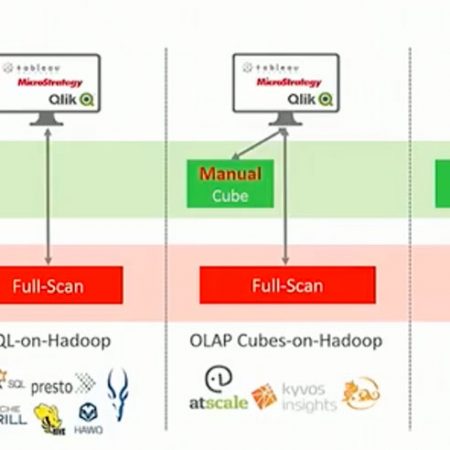Share
Things are becoming smarter. Inanimate things, things that you wouldn't ordinarily expect to have a brain—teakettles, washing machines, refrigerators and locks—now have WiFi innards that let you control them with your phone. While these newer, smarter home goods have definitely had their teething pains in terms of how they interact with the real world, those making them have problems of their own. To put it simply, everyday goods are becoming harder and harder to make.
According to a broad survey of the industry, 40% of respondents see a rise in manufacturing complexity within their vertical. The average manufactured good contains more mechanical, electrical, and software components than ever before. By virtue of this complexity, it is also now more difficult to manufacture goods than ever before. Designing a system, assembling the required components, and ensuring that it doesn't break before its projected end of life is now a greater challenge than ever—and it's one that Big Data can solve.
How can Big Data solve manufacturing complexity?
It starts with design. Once humans have a basic design to start from, machines can take over pretty well, creating millions of tiny iterations that vary the parts of a product for different outcomes. All that's left for people to do is to pick out the most optimal combination of price and performance.
This process, known as simulation analytics, has been used to design everything from diapers to Patriot Missiles. Procter & Gamble, a consumer goods giant that serves almost 5 billion customers globally, uses modelling and simulation in the design of disposable diapers, to create thousands of product iterations in seconds, in order to find the best product design. When developing a new dishwashing liquid, they use predictive analytics to predict how moisture would excite fragrance molecules, to make sure the right fragrance is felt by consumers at every stage of the dishwashing process.
Research suggests that companies who use this method will experience:
- 16% reduction in development time
- 13% reduction in product cost
- 10% fewer corrections post-design
In other words, Big Data helps companies get products to market faster and cheaper. Moving forward, the same techniques help these same products work better and last longer.
Managing the product lifecycle with Big Data
Product lifecycle is another huge concern in manufacturing, and it's another area that's exacerbated by complexity. Complexity adds more points of failure in a given product. Simulation-aided design can smooth this down a little, but other aspects of big data can help.
The manufacturing process is separate from the design of the particular product, but it contributes just as much to its long term viability. Everything from supply chain to assembly to packaging and shipping has an effect. Big Data is of use here—in fact, some of the first applications of big data evolved from manufacturing. As recently as 2010, at the dawn of the Big Data revolution, data produced from the manufacturing sector amounted to two exabytes per year.
This data can be of tremendous help during manufacturing. During assembly, even something as trivial as an incompletely tightened screw can have drastic effects on a product's long-term reliability and functionality. The ability to automatically inspect and monitor the manufacturing process might eventually cut the cost of manufacturing in half, according to the report linked above.
In one case, Mueller Company, multi-plant manufacturer of water distribution products, implemented a system to automatically collect data from its manufacturing processes, and trained its staff on using the new data to solve problems. The result was 90% reduction in scrap and rework and a dramatic improvement in the company’s profitability. One of the keys to driving the change was creating a single data source that was trusted by all departments.
The End of Data Silos is the Beginning of Big Data Mastery
The torrent of data coming from manufacturing equipment—and increasingly, products themselves—is wasted unless it's meaningfully incorporated into an analysis platform. This problem, known as data siloing continues to be the major roadblock in implementing big data for manufacturing. 37% of companies report that there are inefficiencies in their manufacturing process that they know about, but can't find due to incomplete or unavailable data. Companies that succeed in this arena tend to:
- Implement master data management tools
- Keep track of data quality issues
- Appoint executives and business leaders to put top-down emphasis on data quality
Another benefit will be the ability to capture data from products themselves. According to a report from IEEE Spectrum,
"Sensors embedded in smart products are expected to, through the use of cyberphysical systems, send niche customer insights back, such as information on how they are being used by the customers, what types of functionality are being preferred and what newer functions would be welcome, etc. Furthermore, innovative after-sales services such as proactive maintenance can be offered by means of which preventive measures take place before a failure occurs. In this way, big data can be used to improve the development of the next generation of products and services."
By ensuring that data remains consistent across workflow transitions, and by implementing change management as a priority, many companies have successfully integrated Big Data with product lifecycle management. Companies that emulate these practices will experience their own success.




